湘南 発祥の地 大磯 著盡湘南清絶地
しょうなんはっしょうのちおおいそああしょうなんせいぜつち
東海道線 大磯駅を出てロータリー右手を見ると、植物が植えられている。その植え込みの西端に、平成28年(2016) 2月14日完成披露式をした新しい碑が建てられた。
近くに設置された説明板に詳しい内容が記載してある。
鴫立庵の近く、国道1号線(東海道)沿いにも石碑があります。大磯の謂われ等については下記リンク先をご参照ください。
【参考】湘南 発祥之地 大磯
写真
碑文
湘南 発祥の地 大磯
著盡湘南清絶地 崇雪
堀文子謹書
石碑「湘南発祥の地 大磯 著盡湘南清絶地 崇雪」について
「湘南」は、現在の鴫立庵(しぎたつあん)の中にある「鴫立沢」の標石に鴫立庵の創設者である崇雪という人物が「著盡湘南清絶地」と刻んだことに始まるといわれています。
これは、「清らかで清々しく、このうえもない所、湘南とはなんと素晴らしい所」という意味で、中国湖南省の洞庭湖の沿岸にある「瀟湘湖南(しょうしょうこなん)」の景勝地に似ていることから「湘南」と名づけられたともいわれており、これをもって大磯町が「湘南発祥の地」とする所以となっています。
この石碑は「湘南発祥の地 大磯」を多くの方に紹介するため、平成28年2月に建立されました。堀 文子【ほり ふみこ】(日本画家)
- 1918年 東京麹町生まれ
- 1940年 女子美術専門学校(現:女子美術大学)日本画部卒業
- 1952年 第2回上村松園賞受賞
- 1974年から1999年まで 多摩美術大学教授
- 1987年 神奈川文化賞を受賞
幼少のころから自然界の営みに興味を持ち続け、動植物や微生物、古代文化の意匠など多岐にわたるテーマで作品を描く。
69歳のときイタリア・アレッツォ市にアトリエを構え、5年余り豊かな自然と向き合い、取材と制作に没頭する。
その後、アマゾン、マヤ遺跡、インカ文明を訪ね81歳でヒマラヤを取材し、代表作となる作品、幻の高山植物『ブルーポピー』を発表する。
1967年より大磯にアトリエを構え、日本画の他、装幀、随筆でも多くの作品を発表している。〜心なき身にもあはれは知られけり鴫立つ沢の秋の夕暮れ〜
これは、平安末期の歌人・西行法師が大磯付近の海岸を吟遊して詠んだといわれている和歌です。その後、江戸時代初期の寛文4年(1664年)に小田原の崇雪(そうせつ)という人物が、西行のこの歌にちなみ、昔の沢らしい面影を残す景色の良いこの場所に鴫立沢の標石を建てたといわれています。
そして石仏の五智如来像(釈迦 ・阿弥陀 ・大日 ・阿閦 ・宝生 の五仏)をこの地に運び草庵を結んだのが今日の鴫立庵の始まりです。
その後、紀行家と知られ、俳諧師としても有名であった大淀三千風(おおよどみちかぜ)が元禄8年(1695年)頃、鴫立庵主第一世として入庵して以来、京都の柿落舎、志賀の無名庵と並び日本三大俳諧道場として現在まで続いています。
Stone Marker "Oise, the Birthplace of Shonan, Sousetsu Akirakani Shonan ha seizetsu wo tsukitsukusu no chi"
According to legend, the word, "shonan," traces back to the sentences carved on the stone marker in today's Shigitatsuan Hut, "akirakani Shonan ha seizetsu wo tsukitsukusu no chi," which were engraved by the founder of Shigitatsuan Hut, Sousetsu.
These sentences are translated as follows: "What a wonderful place Shonan is! It is clear and fresh; itis the best place imaginable." As this place is similar to a picturesque place of "Shosho Konan," which is located along Lake Dongting in Hu'nan province in China, it was reportedly named as "shonan." Therefore, Oiso Town is considered to be "The Birthplace of Shonan."
This stone monument was constructed in February, Heisei 28 (2016) so that we can let many people know about "The Birthplace of Shonan Oiso."Hori Fumiko (Japanese-style painter)
- 1918 Born in Kojimachi, Tokyo
- 1940 Graduated from Private Women's School of Fine Arts (Presently called : Joshibi University of Art and Design), Concerntration in Japanese Pinting
- 1952 Awarded the 2nd Uemura Shoen Prize
- 1974 - 1999 Professor at Tama Art University
- 1987 Awarded the Kanagawa Culture Award
Since she was a child,Hori Fumiko has been interested in nature. Therefore, she created a lot of paintings based on various themes including animals, plants, microorganisms, and designs of ancient culture.
When she was 69 years old, Hori built a studio in Arezzo, Italy. For no less than five years since then, she was engaged in gathering information for her paintings and creating works in nature. Later, she traveled to the Amazon, Mayan and Incan sites. At the age of 81, she traveled to the Himalayas to gather information for her paintings, which led to her representative work, Blue Poppy, the painting of the alipine plant in the Himalayas.Having deserted worldly desires
Through I have become a Buddhist monk
I felt moved to see
The scene when a snipe takes wings
From a stream in one autumn sunsetThis is a traditional Japanese poem of 31 syllables recited by a poet, Saigyo, in the late Heian peri(the 12th century) when he strolled around the seashore of Oiso.
Later,in Kanbun 4 in the earlyEdo period (1664), Sousetsu, who lived in Odawara, put up a stone maker in this area with a beautiful view, which still has a vestige of the stream in the old days, based on Saigyo's poem.
Shigitatsuan Hut was built when five Nyorai images made of stone (Shakamuni, Amida Nyorai, Dainichi Nyorai, Ashuku Nyorai, and Housho Nyorai) were brought into this place.
Later, since Ooyodo Michikaze, a famous haiku (a traditional Japanese poem of 17 syllabeles) poet as well as a travel writer, started to live in this hut as the first dweller around Genroku 8 (1695). This hut has been one of the third biggesttrans halls on a par with Rakushii in ykoto and Mumyouan in Shiga Prefecure.English translated by KANAGAWA SGG Club
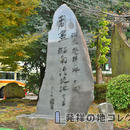
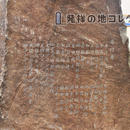
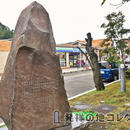
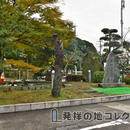

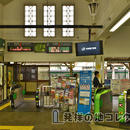

コメント